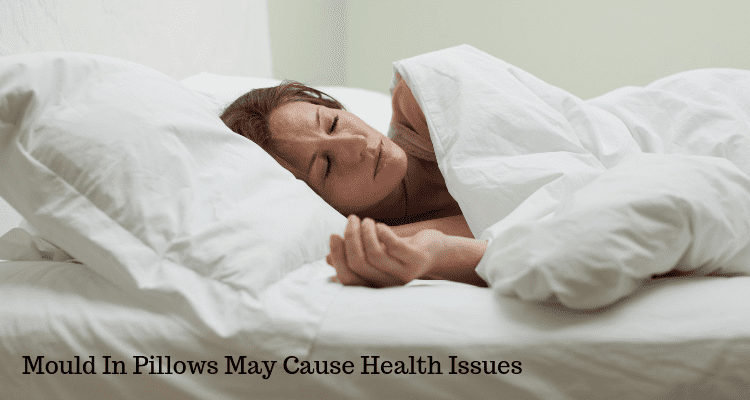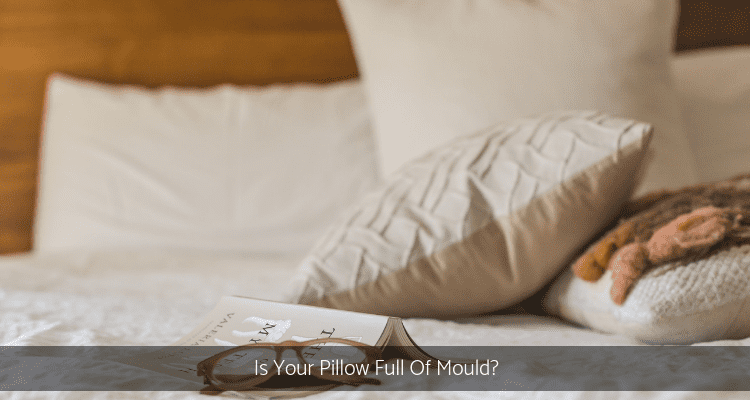Before you go to sleep tonight, think about the dark microbial zoo you are going to rest your head on. If you thought your bed was a pristine haven, think again. Research published last year describes how unhygienic your bed – where you spend one third of your life – really can be.
Every night you rest your head on a pillow full of not only millions of dust mite, but potentially harmful fungus spores.

The United Kingdom researchers at University of Manchester, found one of the most common types of fungus in pillows is a mould called Aureobasidium pullulans. This is usually found in the home on damp window frames. Colonies can vary in colour from cream or pink to brown or black. Unlike some of the other fungi the UK researchers found in the pillows, Aureobasidium pullulans rarely leads to infections. However, it is known to cause mould allergies, not good news if you happen to be sleeping with it right under your nose.
According to the Asthma and Allergy Foundation of America, only a few moulds cause allergic reactions. Aureobasidium pullulans, being a major culprit. It is commonly believed, we come into contact with moulds outside rather than inside the home.
To see how prevalent fungi are in the home, where we tend to do most of our living, the UK researchers focused on pillows. Their reasoning was that pillows don’t tend to be washed regularly. Further more, many fungi like damp environments, such as our beds, where we each secrete 100 litres of sweat each year into our bedding.
The study of 10 pillows slept on regularly, aged 15-20 years, were found to have more than one million fungus spores per pillow. In addition, 50 species of fungus were found, with individual pillows containing four to sixteen species.
The presence of house dust mites was also found in the pillows. The UK researchers said that the mites and the fungus coexist in a sort of mini zoo inside our pillows. Research shows that dustmite feed upon fungi, and one theory is that the fungi are in turn using the house dust mites’ faeces as a major source of nitrogen and nutrition, along with human skin cells.
The researchers pointed out, the study was not reason to replace our pillows but to be aware what the fungi are doing there and whether a particular species was of concern.
To keep your pillow fresh, we recommend this pillow like this one or the use of a pillow protector. Regular airing of your pillow and standing it up on its side each morning will provide airflow to the underside.
Airing regularly in direct sunlight will refresh and rejuvenate pillows and their contents.
PRODUCT:
AllerProtect Pillow
Provides asthma and allergy relief by stopping the continual night time exposure to dust mite allergens while you sleep. Wash in hot water – comes out perfectly every time!

This pillow and allergy covers can be washed in cold water and line dried. For pillows with no removable cover, any stains can be spot treated with mild, natural solution.
Towards healthier living Carol Parr ♥
As Building Biologists, we have acquired knowledge of adverse health effects and recommend effective strategies to reduce occupants’ exposure by eliminating and controlling as many sources of pollutants in order to create healthy indoor living environments that are as exposure-free and natural as practically possible.
References
Asthma and Allergy Foundation of America. 2015. Mold Allergy. [ONLINE] Available at: https://www.aafa.org/mold-allergy/. [Accessed 1 February 2017].
Asthma and Allergy Foundation of America New England Chapter. 2019. Mold Allergy. [ONLINE] Available at: http://asthmaandallergies.org/asthma-allergies/mold-allergy/
Author
-
We’re glad you’re here. We’re Carol and Tony, founders of one of the longest running Healthy Home Blogs in the world, Mitey Fresh Australia. We’ve been on this journey for the last 25 years and are passionate about helping families sift through health hazards and triggers like allergens, mould, water damage, chemicals and EMFs, to get clarity about what’s toxic and what’s not so they can create a healthy and happy home for their family they love. Each month, people visit this blog seeking focus on the health and wellbeing of their loved ones, sustainable and effective practice tips and guides, to help create and manage healthier indoor spaces, improve the built environment that is pleasing to the senses and support healthy living and nature, every day. Starting this blog was to help change people’s lives, one family at a time, and we can’t wait to share how its allowed us to stand next to you and show you how interpreting these synergies between buildings and the environment they are built in will impact upon the health and well-being of those who occupy them. Find out more about Healthy Homes and what this blog can do for you!





